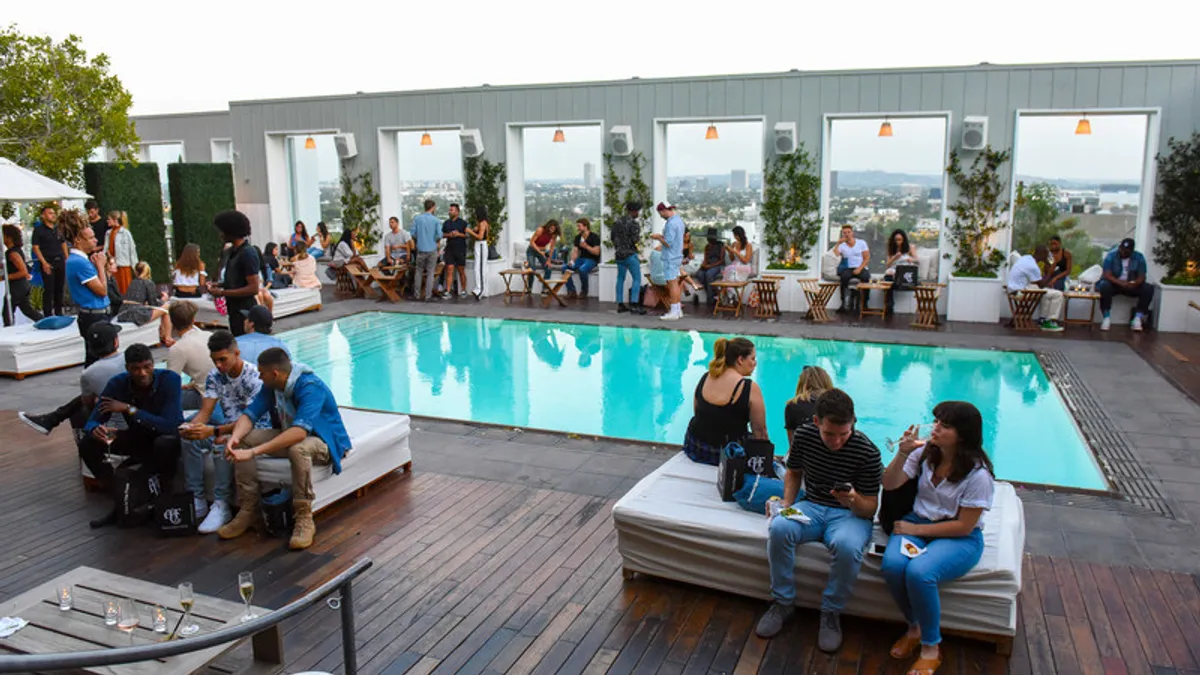Dive Brief:
-
In its Multifamily Amenities 2019 report, Multifamily Design + Construction (MD+C) found that developers and landlords are stocking their properties with amenities — services, facilities and activities — so that they better appeal to potential tenants and retain the ones they have. The latest survey discovered how many of the 113 multifamily amenities landlords are including in their projects.
-
The majority of survey respondents, which included architects, contractors, multifamily developers and property owners, found that the top four amenities in multifamily projects were dog parks, children's playgrounds, bicycle storage and washers and dryers. Features that have failed to gain traction are voice-activated systems as well as pet grooming and overnight services.
-
The report authors noted that even when developers pack their properties with amenities, there's no guarantee which ones will resonate most tenants. This is complicated all the more by the addition of new options like ride-share waiting areas, co-working spaces and biometric security systems.
Dive Insight:
The report details the top 10 amenities in several categories. They include (in descending order of popularity):
Top outdoor amenities
- Lounge Area
- Fire Pit/Grill
- Storage (outside the unit)
- Rooftop Terrace/Deck
- Garden Walk/Walking Path
- Pool (outdoor or indoor)
- Covered Parking
- Kitchen (outdoor)
- Community Garden/Urban Farm
- Cabanas
Top indoor amenities
- Washer/Dryer (in residence unit)
- Indoor Lounge
- Community Kitchen
- Coffee Bar/Café
- Library/Reading Area
- Tankless hot water systems
- Catering Area
- Video/Film Screening Room
- Wine Bar
- Juice Bar
Top recreation amenities
- Billiards/Pool Table
- Game Room, Arcade, or Simulator
- Gym, Basketball, or Volleyball Court
- Jogging/Walking Path
- Bocce Court
- Spin Studio
- Cornhole
- Peloton
- Putting Green
- Tennis Court
In the struggle to determine which amenities will provide the the most bang for the buck, which ones tenants can likely do without and what makes the best financial sense, some landlords have started to monetize certain services. But will tenants put up with having to pay for more services, or will this type of strategy backfire?
"It varies based on what the rents are and if you are able to build these amenities into the rent, which is a constant discussion that landlords and developers have," said Carole Bloom, executive president of leasing for Halstead Development Marketing.
Bloom is working on The Pierrepont by developer Jonathan Rose, an amenity-heavy building in New York City's Brooklyn Heights. "Are we building this into the rent so that the residents feel as though they're getting something?
And how do property owners pick the building's amenities? "Like anything else; it's your target demographic — who is living in your building?" Bloom said.
The Pierrepont, for instance, has relatively large units, which appeal to families, so many built-in amenities are geared toward children, like an indoor play room, outdoor play area and courtyard as well as spaces for yoga and music classes.
Even though the building caters to children, though, that doesn't mean that the adults are left out. A library, a dining room with a kitchen, lounge areas are all features that the grownups are demanding. And although the millennial demographic is famous for its social leanings, that's not what is driving owners to include these community-based features.
"I think it's driven by anyone living in a luxury high-rise building," Bloom said.
"Successful properties," said Lela Cirjakovic, executive vice president of Waterton, a national real estate investor and operator of $5 billion in assets, "require thoughtfully programmed amenity packages, constant interaction with residents and continual fine-tuning to ensure amenities and services stay in line with evolving preferences and regional differences." To that end, features that save time are what tenants value the most, she said.
Technology also has changed the way that property owners deliver amenities and has allowed them, Cirjakovic said, to impact the resident experience in positive ways. An example of this is a user-friendly online resident portal app.











